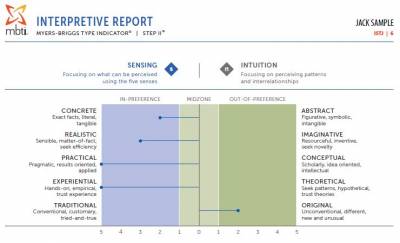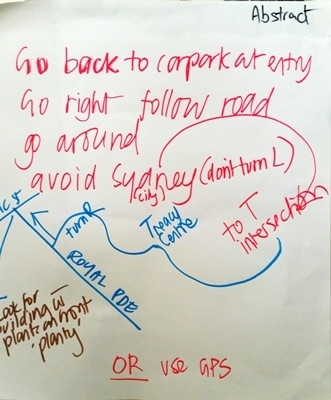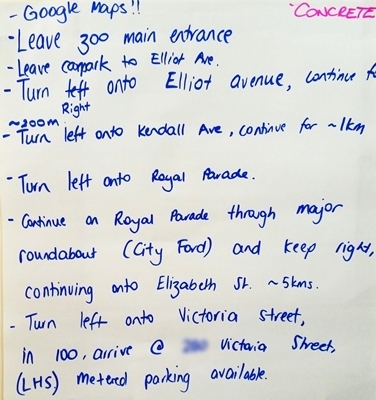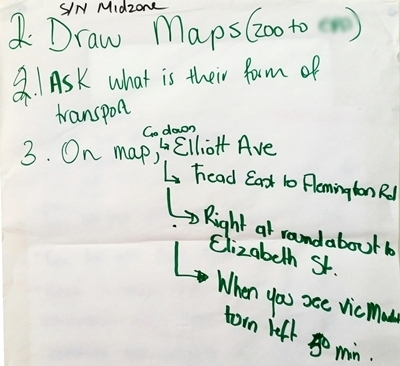
11 Jul 2016 Communicating effectively using Myers Briggs Type – Part 2
Communicating more effectively using your MBTI Type
Part 2
So in my previous article, I highlighted how understanding your Myers Briggs preference for either Sensing or iNtuition can affect the way you communicate with others. If you have not read the first article, you can do that here.
In this article, (Part II), I want to focus more on understanding how the Myers Briggs Step II Assessment can help you refine your communication style even further when communicating to those who have a different way of viewing the world.
The Myers Briggs Step II Assessment indicates some of the complexity of your personality by showing your results on 5 different parts/facets, for each of the Step I preference pairs. (E/I–S/N–T/F or J/P) This means in all, there are 20 different Facets available. Knowing your results on these 20 facets can help you better understand your unique way of experiencing and expressing your type. (From the MBTI Step II Interpretive Report)
To recap, when you undertake the standard Myers Briggs Type Assessment (called Step I), you answer 93 questions to determine your basic 4 letter code indicating your Step “I” MBTI Type. However, when you undertake the Myers Briggs Step “II” version, an additional 47 questions are undertaken which then means we can identify the Step II Facets under each set of preference pairs. Again, there are 5 different Facets under each preference pair.
If you are not familiar with how the Myers Briggs Step II Assessment actually works, it may be helpful to refer to our Web Site page where I describe this in much more detail. For now, I will assume a basic understanding of this for the rest of this article.
So in this article, I intend to focus on the Concrete/Abstract Facet in the Sensing/iNtuition preference pair. (Shown below) Recall that the Sensing/iNtuition preference pair explains how a person takes in information.
Note that three results are possible on any Facet pairing:
- In Preference
- Out of Preference
- Midzone
Note too that the Blue lines indicate the strength of the facet preference. You can see how it is possible to be in the Midzone on any or all of these facets. (Based upon how a person’s answers the relevant questions for this section)
So this is an image from the Myers Briggs Type Step II Interpretive Report. You can see in this example that Jack Sample is an ISTJ. In this case, it is highlighting the results from the second set of preference pairings; the Sensing/iNtuition dichotomy which is our focus for this article.
Can you see that he is “In Preference” on the Concrete, Realistic, Practical and Experiential Facets? But he is “Out of Preference”, on the last facet (Original). Again, an “Out of Preference” result is possible because of the additional 47 questions used to identify these results.
So let’s take a closer look at the Concrete/Abstract Facet pole. These two Facets Poles describe a person’s “Focus of Attention” when taking in information.
Most Sensing Types will have a Facet preference for “Concrete”. (as in the example above). That is they tend to be grounded in reality. They trust Facts. They tend to interpret things quite literally.
On the other hand, most Intuitive Types will have Facet preference for “Abstract”. That is they like to read between the lines. They tend to use metaphors a lot to explain themselves. They often make mental leaps and really enjoy activities like brainstorming etc.
I recently ran a Myers Briggs Team Building workshop for an organisation and ran an activity where I split the group into one of the 3 possible positions on the Concrete/Abstract facet. So a group who were “In Preference”; a group who were “Out of Preference” and finally, those who were “Midzone” (Meaning not a strong preference for either)
I asked each group to draw a map that would help a Visitor get back to the offices of the group I was working with from the training location we were at. The results were very funny for the group, but incredibly revealing at the same time.
Abstract Group
The Abstract group spent a lot of time chatting about how they would draw a map. They eventually put pen to paper and drew a very rough map (some thought it was illegible!) The map had very little detail. When they had to present their map to the group, even they agreed it would not have been much help to our “stranger”. They did however have the foresight to suggest on their Map that the stranger might be best to simply use their GPS.
Concrete Group
Upon being given the task, someone in the Concrete group almost immediately pulled out their phone and looked up Google Maps . The group then compiled very detailed, dot pointed instructions showing the visitor how to get to their offices. It seemed to all very easy to follow; the Abstract group thought this was a hoot and could not figure out why they never thought to look at Google Maps. They also agreed, the instructions were very easy to follow.
Midzone Group
The Midzone group were a bit of a mixture as you might imagine. There were not as quick off the mark as the Concrete group, but eventually came up with some fairly reasonable instructions, though not anywhere near as clear as the Concrete group.
I think you might be getting the idea. After the activity, we chatted at length as a group about the implications for such a result.
Application
This is mostly apparent of course when you are delegating or when you are trying to sell an idea to someone.
Those with a facet preference for Abstract are not too concerned about detail. (Especially initially!) They have more of a big picture focus. They want to know the outcomes you are looking for. They are keen to know how this all fits with the bigger picture too. They are less concerned about how things will be done. They will want you to “paint them a picture” of what you want! If they happen to be Extraverted as well, expect them to get pretty excited if they like your idea. They may start making big mental leaps saying things like; “we can/should do this as well” etc.
On the other hand, those with a facet preference for Concrete are very concerned about the detail. They want to know the what; the when and the how you want this done. Expect them to ask lots of questions about the process. They may even be a little cautious and not overly trusting initially. This may come across as them being slightly negative! However, another way to interpret this is they just want the facts out on the table before they commit to something. “How much time do I have?; “what resources can I use?” etc….. You may even find them coming across as a little resistant as they search out/explore the best way to do the task you are giving them.
Summary
Can you see the inherent problems here? If you are dealing with someone who sits opposite on the Concrete/Abstract facet pole as yourself, you may find communicating effectively with them quite a challenge. They may be looking for more or less detail than you are providing.
You will get far better results if you know and then cater for the other person’s unique communication preferences on this facet pole. (Abstract or Concrete)
Can you think of times when you have delegated a task to someone and then been surprised about how your idea was received? It is quite possible that some of the communication issues you face when delegating can be traced back to differences on the Concrete/Abstract facet preferences for the people you deal with. Understanding this nuance can help improve the effectiveness of your communication and delegating.
If you are keen to know your own Myers Briggs Step II Personality Preferences, we can facilitate that for you and provide you with a personalised and very detailed Myers Briggs Step II Interpretive Report along with the required 1.5 hour personal debrief. (In person or over the phone depending upon location). Check out our Myers Briggs Personal Assessment & Debrief web page or you can email me for more information.
Naturally, this is even more powerful when your entire team can undertake this type of assessment in our MBTI Team Building program so you know who sits where in your team also. You can find out more about that here or contact Lingford Consulting for more information.
Thanks and I hope you found this interesting and thought-provoking. As always, I invite your feedback/comment.
Geoff Prior – Lingford Consulting, July 2016
Workload & Email Management Training/Coaching. MBTI Consultant








No Comments